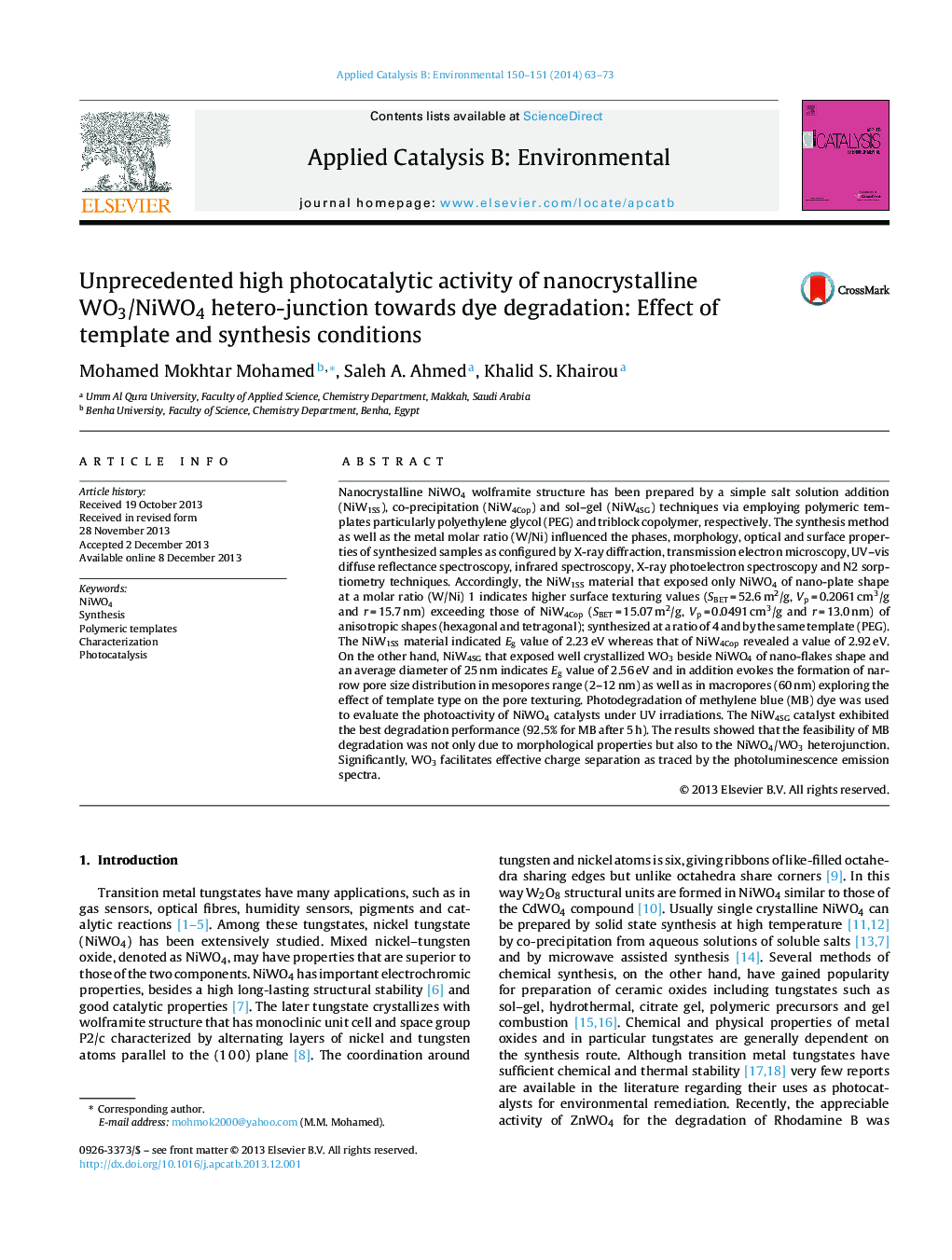| Article ID | Journal | Published Year | Pages | File Type |
|---|---|---|---|---|
| 45910 | Applied Catalysis B: Environmental | 2014 | 11 Pages |
•NiWO4 structure was prepared using various techniques via employing polymeric templates.•NiWO4 exhibited extraordinary optical and surface properties.•NiWO4 synthesized using sol–gel shows superior photocatalytic activity.•Residual carbons and WO3 with NiWO4 played main role in the degradation.
Nanocrystalline NiWO4 wolframite structure has been prepared by a simple salt solution addition (NiW1SS), co-precipitation (NiW4Cop) and sol–gel (NiW4SG) techniques via employing polymeric templates particularly polyethylene glycol (PEG) and triblock copolymer, respectively. The synthesis method as well as the metal molar ratio (W/Ni) influenced the phases, morphology, optical and surface properties of synthesized samples as configured by X-ray diffraction, transmission electron microscopy, UV–vis diffuse reflectance spectroscopy, infrared spectroscopy, X-ray photoelectron spectroscopy and N2 sorptiometry techniques. Accordingly, the NiW1SS material that exposed only NiWO4 of nano-plate shape at a molar ratio (W/Ni) 1 indicates higher surface texturing values (SBET = 52.6 m2/g, Vp = 0.2061 cm3/g and r = 15.7 nm) exceeding those of NiW4Cop (SBET = 15.07 m2/g, Vp = 0.0491 cm3/g and r = 13.0 nm) of anisotropic shapes (hexagonal and tetragonal); synthesized at a ratio of 4 and by the same template (PEG). The NiW1SS material indicated Eg value of 2.23 eV whereas that of NiW4Cop revealed a value of 2.92 eV. On the other hand, NiW4SG that exposed well crystallized WO3 beside NiWO4 of nano-flakes shape and an average diameter of 25 nm indicates Eg value of 2.56 eV and in addition evokes the formation of narrow pore size distribution in mesopores range (2–12 nm) as well as in macropores (60 nm) exploring the effect of template type on the pore texturing. Photodegradation of methylene blue (MB) dye was used to evaluate the photoactivity of NiWO4 catalysts under UV irradiations. The NiW4SG catalyst exhibited the best degradation performance (92.5% for MB after 5 h). The results showed that the feasibility of MB degradation was not only due to morphological properties but also to the NiWO4/WO3 heterojunction. Significantly, WO3 facilitates effective charge separation as traced by the photoluminescence emission spectra.
Graphical abstractFigure optionsDownload full-size imageDownload as PowerPoint slide
